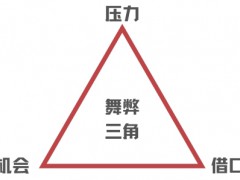據世界石油7月6日消息,沙特阿拉伯和阿拉伯聯合酋長國之間的激烈斗爭使歐佩克+陷入危機,并阻止了供應的增加,石油價格躍升至6年多來的最高水平。
西德克薩斯中質原油(WTI)上漲至每桶76.98美元,為2014年11月以來的最高水平,談判破裂導致市場失去了一直期望的下個月的額外供應。
接下來發生的事情將決定這場對峙是否會升級為一場與去年價格戰一樣具有破壞性的沖突。
這關系到在通脹壓力不斷加大的情況下全球經濟復蘇的穩定,以及產油國聯盟維持其對石油市場來之不易的控制權的能力。
隨著美國假日出行高峰的到來,汽油價格已經超過每加侖3美元,這被視為駕車者的敏感門檻,對事態可能進一步惡化的擔憂顯而易見,白宮敦促各方達成妥協。
經過幾天的緊張談判,歐佩克及其盟國放棄了周一的會議。在如何衡量產量削減方面的分歧打亂了一項提高產量的初步協議,并迅速惡化為沙特阿拉伯和阿聯酋之間罕見的私人和公開爭吵。
兩國上一次在石油政策上發生沖突是在2020年12月,當時阿聯酋提出了退出歐佩克的想法。那次爭端最終以休戰告終,但這次談判的破裂如此嚴重,以至于該組織甚至無法就下次會議的日期達成一致。
談判破裂的直接后果是,預計8月份的增產將不會實現,導致市場在全球經濟從疫情中復蘇之際出現原油短缺。周二,沙特阿美上調了8月份其阿拉伯輕質原油和其他品級原油的價格。
瑞銀集團大宗商品分析師Giovanni Staunovo表示:“由于石油市場已經處于赤字狀態,供應增長滯后于需求增長,歐佩克+現有產量限制的延續可能會推高油價。”
從中期來看,這種分裂可能會產生相反的效果,隨著各國競相爭奪地位并開始增加產量,油價可能會更低。Staunovo稱,但這種可能性很低。
伊拉克石油部長賈巴爾表示:“我們不想打價格戰。我們不希望油價上漲至目前的水平。”
主要消費者也在關注歐佩克的談判失敗。幾小時內,美國總統拜登敦促該組織采取行動。沙特阿美對美國客戶的提價幅度遠遠小于對亞洲買家的提價幅度。
一位發言人表示,白宮正在“密切關注歐佩克+談判及其對全球經濟復蘇的影響。政府官員已與相關國家首腦接觸,敦促達成妥協方案,使擬議的增產計劃得以推進。”
在這方面,美國可能會在歐佩克內部找到盟友。
歐佩克+已經恢復了去年疫情初期暫停的部分原油供應。這個由23個國家組成的聯盟決定,從5月到7月,每天向市場增加約200萬桶原油。周一擺在部長們面前的問題是,未來幾個月是否要繼續這樣做。
歐佩克自己的數據顯示,隨著燃料消費的持續復蘇,一度膨脹的石油庫存已回落至平均水平。歐佩克秘書長穆罕默德·巴爾金多上周表示,今年下半年的日需求量將比上半年高出500萬桶。
放開增產的主要支持者一直是俄羅斯。該國企業渴望提高產量,而在9月份的議會選舉之前,國內汽油價格不斷上漲是一個日益嚴峻的問題。
俄羅斯未能實現其期望的增產,這對俄羅斯副總理亞歷山大·諾瓦克來說是一次罕見的挫折。諾瓦克是歐佩克+聯盟的締造者之一。周一的會議被取消后,他沒有公開發表評論,但是他有充分的動機繼續在幕后努力尋找解決方案。
伊拉克石油部長表示,他希望在未來10天內“見證”另一個歐佩克+會議的日期,應該能夠達成一個讓所有人都滿意的協議。與此同時,他預計成員國將繼續遵守現有的生產配額,并表示對價格的影響將是暫時的。
賈巴爾在電話采訪中表示:“市場預計未來幾個月油價會小幅上漲,協議的延期導致了油價的小幅上漲。如果歐佩克同意增加出口,價格可能會下降。”
裘寅 編譯自 世界石油
原文如下:
Oil prices hit 2014 records as OPEC plunges deeper into crisis
Oil jumped to the highest in more than six years after a bitter fight between Saudi Arabia and the United Arab Emirates plunged OPEC+ into crisis and blocked a supply increase.
West Texas Intermediate crude advanced to $76.98 a barrel, the highest since November 2014, as the breakdown in talks left the market without the extra supplies for next month it had been counting on.
What happens next will determine whether the standoff could escalate into a conflict as destructive as last year’s price war.
At stake is the stability of the global economic recovery amid growing inflationary pressures, and the ability of the producers’ alliance to retain its hard-won control over the oil market.
With the U.S. holiday driving season underway and gasoline prices already above $3 a gallon -- seen as a sensitive threshold for motorists -- the fear that events could spiral further was evident, with the White House urging a compromise.
After several days of tense talks, the Organization of Petroleum Exporting Countries and its allies abandoned their Monday meeting. A disagreement over how to measure production cuts upended a tentative deal to boost output and swiftly deteriorated into an unusually personal and public spat between Saudi Arabia and the UAE.
The last time those two countries clashed over oil policy, in December 2020, the UAE floated the idea of leaving the cartel. That dispute ended in a truce, but the breakdown in negotiations this time around was so severe that the group couldn’t even agree on a date for its next meeting.
The immediate consequence of the collapse in talks is that the output hike expected for August won’t take place, leaving the market short of barrels just as the global economy recovers from the Covid-19 pandemic. On Tuesday, state-run Saudi Aramco increased the prices of its Arab Light crude and other grades in August.
“With the oil market already in deficit and supply growth lagging oil demand growth,” the continuation of existing OPEC+ production limits is likely to send prices higher, said Giovanni Staunovo, a commodities analyst at UBS Group AG.
Over the medium term, the split could potentially have the opposite effect, bringing lower prices as countries jockey for position and start pumping more. The probability of this is low, Staunovo said.
“We do not want a price war,” said Iraq’s Oil Minister Ihsan Abdul Jabbar. “And we do not want oil prices to rise to more than the current levels.”
Major consumers were also paying attention to the cartel’s failure. Within hours, the administration of U.S President Joe Biden urged the group to get its act together. Saudi Aramco’s price increases for U.S. customers were much smaller than those to buyers in Asia.
The White House is “closely monitoring the OPEC+ negotiations and their impact on the global economic recovery,” a spokesperson said. “Administration officials have been engaged with relevant capitals to urge a compromise solution that will allow proposed production increases to move forward.”
In this regard, the Americans may find allies within the cartel.
OPEC+ has already been reviving some of the crude supplies it halted last year in the initial stages of the pandemic. The 23-nation coalition decided to add about 2 million barrels a day to the market from May to July, and the question before ministers on Monday was whether to keep going in the coming months.
The cartel’s own data show that once-bloated oil inventories are back down to average levels as the recovery in fuel consumption continues. Demand in the second half will be 5 million barrels a day higher than in the first six months of the year, OPEC Secretary-General Mohammad Barkindo said last week.
The main proponent for opening the taps has been Russia. Its companies are keen to boost output, while rising domestic gasoline prices are an issue of growing importance before the parliamentary elections in September.
Moscow’s failure to secure its desired production increase was a rare setback for Deputy Prime Minister Alexander Novak, one of the architects of the OPEC+ alliance. He made no public comment after the cancellation of Monday’s meeting, but has every incentive to continue working behind the scenes to find a resolution.
Iraq’s oil minister said he hopes to “witness a date” within the next 10 days for another OPEC+ meeting, which should be able to reach a deal that satisfies everyone. In the meantime, he expects members will continue to honor their existing production quotas, and said the impact on prices will be temporary.
“The market was expecting a small addition in the coming months, the delay in the agreement led to this slight rise in oil prices,” Jabbar said in a phone interview. “Prices may come down if OPEC agrees to raise exports.”
免責聲明:本網轉載自其它媒體的文章,目的在于弘揚石化精神,傳遞更多石化信息,并不代表本網贊同其觀點和對其真實性負責,在此我們謹向原作者和原媒體致以敬意。如果您認為本站文章侵犯了您的版權,請與我們聯系,我們將第一時間刪除。







